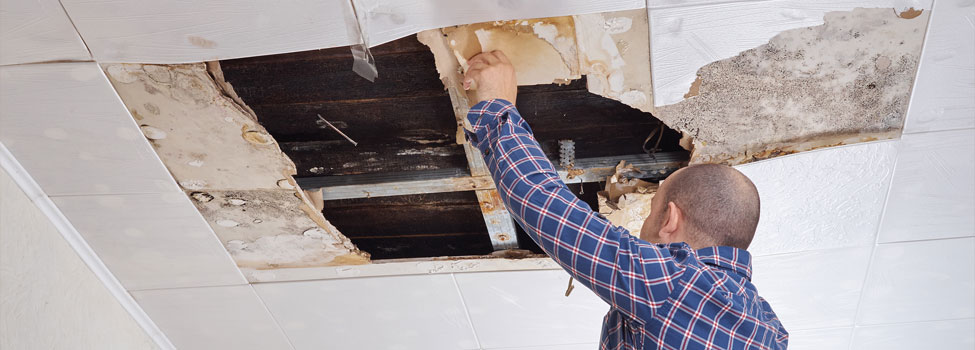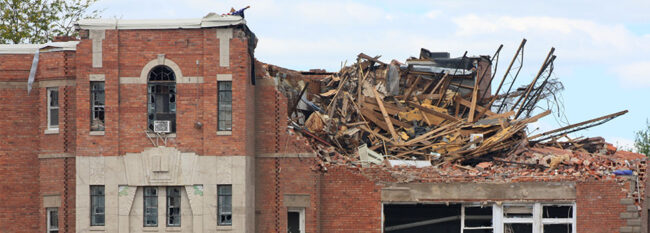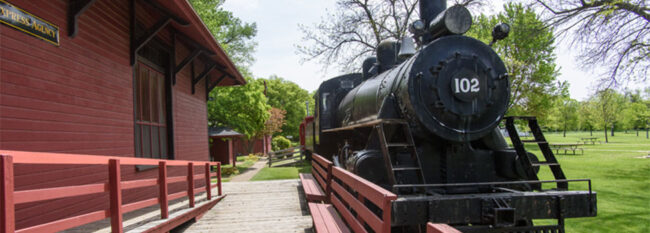Article
Replacement Cost Coverage

MCIT covers approximately $6 billion in total property value, and most of the coverage is written on a replacement cost basis. This article explores how replacement cost coverage is applied to claim situations.
Replacement cost coverage means that for all covered losses subject to available limits, MCIT pays an amount not to exceed the smallest of the following:
- Cost to repair
- Cost to rebuild or replace at the time of loss when with due diligence and dispatch, the rebuilding or replacement could be effected on the same site with new materials of equivalent size, kind and quality
- Actual expenditure incurred in rebuilding, repairing or replacing the damaged or destroyed property on the same or another site not to exceed the size and operating capacity that existed at the time of the loss
What Happens When Comparable Materials are Unavailable
Generally most building materials are common and readily available in the marketplace. In the event that damage occurs to property that involves materials no longer available, coverage applies to repair with the material that most closely represents the characteristics of the original material. For example, brick will be replaced with brick, tile with tile, marble with marble, wood with wood.
In the event that materials are not available, repairs will be considered using materials that most closely duplicate the original materials.
Examples:
- If a rare tile that is no longer available is damaged, it will be replaced with a tile that most closely matches the characteristics of the original tile.
- If a slate roof is damaged, the evaluation of repairs will be based on the cost to repair with slate.
- If asbestos tile that can no longer be used in construction is damaged, the asbestos tile will be replaced with a material that most closely matches the asbestos tiles.
“Comparable kind and quality” does not require identical. As an example, sheetrock may be used as a comparable kind and quality material to repair lath and plaster damage to the interior of a building.
Plumbing and electrical repairs offer a number of examples where existing materials may not meet current codes. In this case, repairs would be assessed based on the cost of replacement with materials that meet current codes.
Historic, Antique Value Not Considered
The evaluation of repairs to a damaged building or its contents will not consider the antique or historic value of collectible furnishings due to their rarity or collector value. If this type of building material is involved, the assessment is based on the kind and quality of the material.
For instance if an oval-shaped beveled glass mirror from a castle in Europe is damaged, the replacement will be based on the cost of an oval-shaped glass mirror of similar dimensions, not the collector value of the original mirror.
Upon request, MCIT offers a fine arts coverage endorsement for scheduled contents at an additional charge.
Member Is Responsible for Repairs
When adjusting a claim, MCIT evaluates damages and makes payment subject to the provisions, conditions and exclusions outlined in the coverage document. MCIT does not hire a contractor or control the repairs. This is the responsibility of the member.
Once MCIT has evaluated the dollar amount of the claim, the member retains control of the repairs and the selection of repair contractors. If the desire of the member is to duplicate the original as much as reasonably possible, the member is free to do that.
If repairs are made beyond what is determined to be of comparable kind and quality, whether it is bigger or better than the original, MCIT does not pay for the improvement. Neither does MCIT pay for materials costing more than comparable kind and quality due to their historical significance or collector value.
Total Losses
Concerning total losses, MCIT follows the Minnesota Valued Policy Law that requires that “the insurer shall pay the whole amount mentioned in the policy or renewal upon which it receives a premium, in case of total loss.”
Case law has established a total loss to be essentially when it is economically imprudent to repair versus rebuild.
MCIT adjusting staff is involved in the determination of a total loss. Once determined, payment of the scheduled value of the building is issued to the member, less the applicable deductible. The Minnesota Valued Policy Law serves to expedite the adjustment process.
Once payment is issued by MCIT, any supplemental/ancillary claim charges, for example those relating to debris removal, fire department service charges or initial remediation costs, are the responsibility of the member out of the total loss payment.
Coverage Provides 125 Percent Margin in Valuation
The MCIT Coverage Document contains a provision extending the limit of coverage of the lesser of 125 percent of the value shown on the member’s property schedule or the actual replacement cost.
This means that in certain circumstances, MCIT would pay up to 125 percent of the scheduled limit or the actual replacement cost value in the event of a total loss, whichever is less.
This provision is only intended to provide, during the scope of rebuilding, a buffer to account for any differential between the scheduled value and the actual cost to rebuild the property caused by inflation, changes in the cost of labor, materials or otherwise at the time of construction.
Keep Scheduled Values Current
Because the available coverage and the cost of that coverage are based on the replacement cost listed on the schedule, it is important that the schedule remain up to date.
MCIT contracts to have all properties with a scheduled value in excess of $100,000 professionally appraised every five years to ensure property is correctly valued. An industry escalator is applied in years between appraisals.
Members should report changes to all scheduled buildings via the member portal (use orange button at top of page to access) to ensure that they are covered for the appropriate amount.
Members with questions relating to their schedules are encouraged to contact their MCIT risk management consultant. Questions relating to replacement cost coverage or the claims process can be directed to the property/casualty claims manager.
Topics



